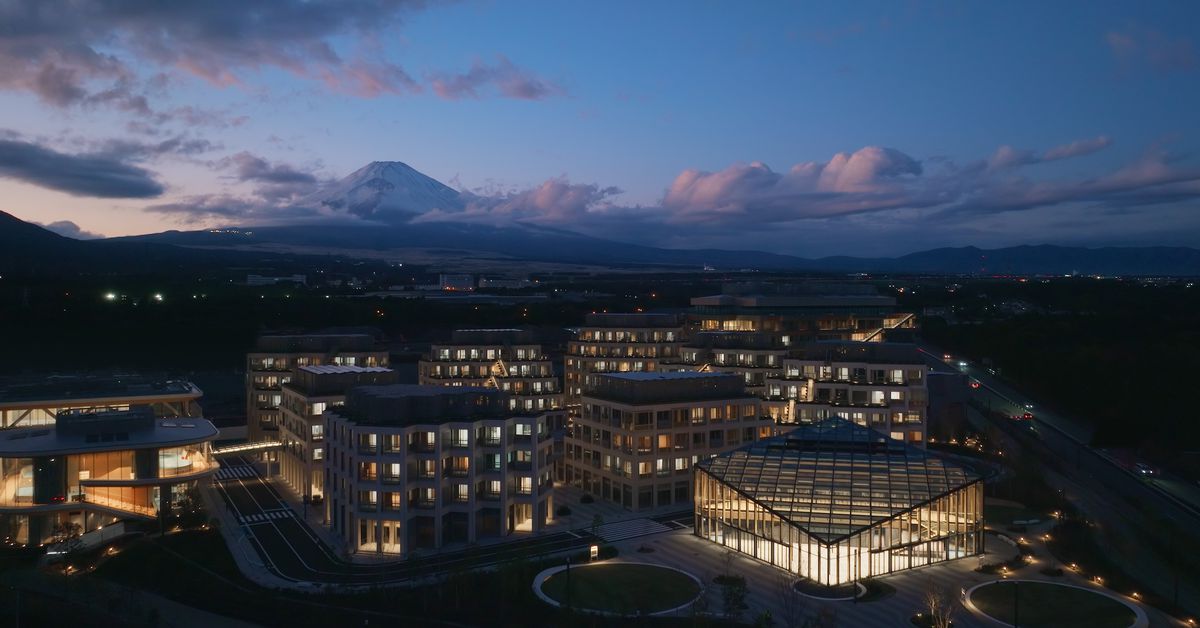Inside Toyota’s Vision: Woven City Welcomes Its Pioneer Residents
As the world moves toward urbanization and technological advancement, Toyota’s ambitious project, Woven City, is poised to redefine modern living. Nestled at the foot of Mount Fuji in Japan, this innovative urban development aims to create a fully integrated ecosystem where cutting-edge technology meets sustainable living practices. The official opening of Woven City for its first residents is a monumental step forward, signaling a new age of smart urban environments that harmonize human life with nature.
The Genesis of Woven City
Conceived in 2020, Woven City embodies Toyota’s vision of a future where mobility, technology, and community coexist seamlessly. The city is designed as a living laboratory, where residents will live in homes equipped with the latest innovations in smart technologies, including autonomous vehicles, artificial intelligence, and robotics. The aim? To create a blueprint for future urban developments worldwide.
Spanning over 175 acres, Woven City is designed for a population of approximately 2,000 residents. Its layout showcases a unique approach to urban planning, with three distinct roadways catering to different modes of transport:
- Pedestrian pathways for walking and cycling.
- Slow lanes for low-speed vehicles, including autonomous shuttles.
- Fast lanes for personal vehicles.
This multi-layered infrastructure not only enhances safety but also promotes a sense of community among residents, ensuring that the city is accessible and navigable for everyone.
Woven City: A Smart Living Ecosystem
At the heart of Woven City’s design is a commitment to sustainability. The buildings are constructed with wood, a renewable resource, and are designed to be energy-efficient. Solar panels will power homes, and hydrogen fuel cells will provide clean energy, showcasing Toyota’s dedication to environmentally friendly practices.
Moreover, the city will implement smart technology to monitor and manage resources effectively. Sensors throughout the city will collect data to optimize energy consumption, waste management, and traffic flow, creating a responsive urban environment that adapts to the needs of its residents.
Innovative Living Spaces
The pioneer residents of Woven City will experience a lifestyle that intertwines technology with daily living. Homes will be equipped with smart devices that allow for real-time monitoring of health and wellness. For instance, residents can track their physical activity, receive alerts about environmental conditions, and even manage their home appliances remotely.
Additionally, the integration of artificial intelligence in daily life means that residents will benefit from personalized services. AI-driven systems will learn individual preferences and routines, enhancing convenience and fostering a sense of comfort.
Community and Collaboration
Woven City is not just a technological marvel; it is also a vibrant community. The design emphasizes shared spaces where residents can gather, collaborate, and engage in various activities. Parks, gardens, and recreational areas will be abundant, promoting a healthy lifestyle and encouraging social interaction.
Furthermore, Toyota envisions a collaborative approach to living. The residents will play an integral role in shaping the evolution of Woven City, providing feedback and participating in trials of new technologies and services. This partnership between residents and developers will ensure that the city evolves to meet the needs of its inhabitants.
Challenges and Opportunities
While the vision for Woven City is ambitious, it does face challenges. The integration of advanced technologies raises questions about privacy and data security. Toyota is committed to addressing these concerns by implementing stringent data protection measures and ensuring transparency in how resident data is used.
Moreover, as a living laboratory, Woven City will encounter the typical challenges of any urban environment, including resource management and community dynamics. However, these challenges also present opportunities for innovation and improvement. The lessons learned from Woven City can inform future urban developments, making cities more resilient and adaptable.
A Model for Future Urban Developments
As Woven City welcomes its first residents, it stands as a beacon of hope for urban planners, architects, and technologists around the globe. The project exemplifies how cities can leverage technology to enhance quality of life while remaining committed to sustainability.
The insights gained from Woven City will undoubtedly influence urban planning practices. By observing how residents interact with their environment and the technologies at their disposal, planners can better understand the elements that contribute to a thriving community.
Conclusion: A Step Towards the Future
In essence, Toyota’s Woven City represents a visionary leap into the future of urban living. By merging technology with sustainability, it creates a harmonious environment where residents can thrive. As the first pioneers settle into this groundbreaking urban development, the world watches closely, eager to learn from the experiences that unfold within this unique ecosystem.
Woven City is not just a project; it’s a statement about what the future of living can and should look like. With a focus on community, collaboration, and innovation, it inspires a hopeful vision for urban spaces where technology enhances human connection and the natural world is respected and preserved.
See more Future Tech Daily

